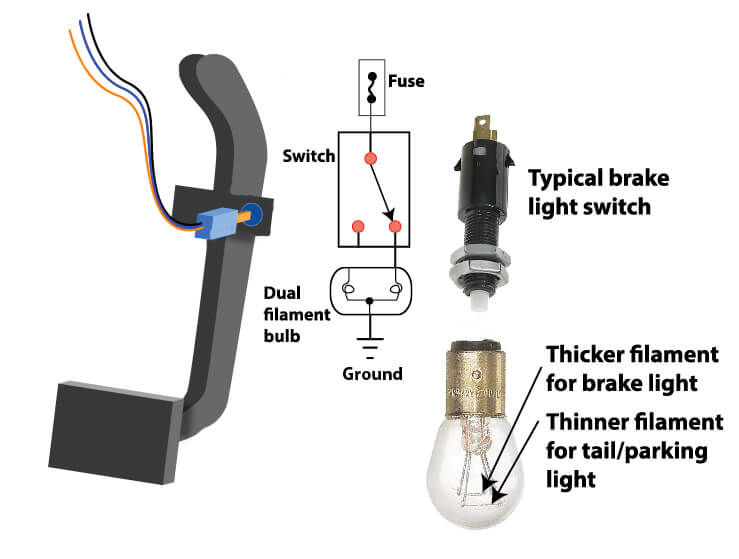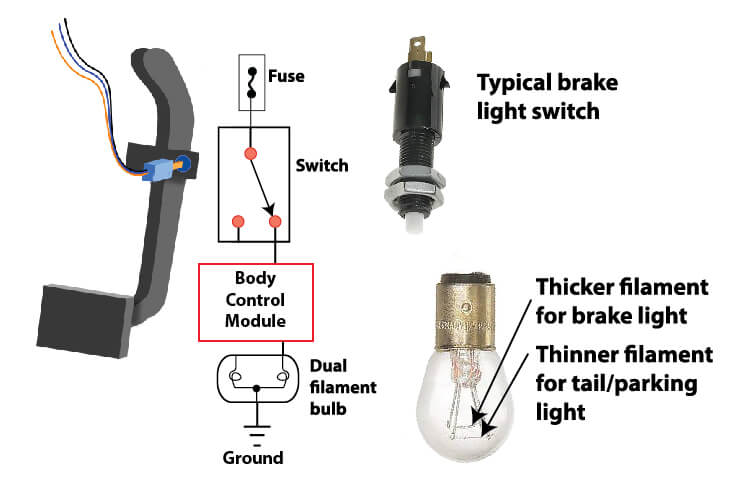Brake light doesn’t work
Brake light doesn’t work — How to fix
The brake light circuit used to be pretty simple. It consisted of a brake light fuse, brake switch, wiring harness, brake light socket and brake light bulb. Power would flow from the brake light fuse to the brake switch. When you applied the brake, the brake switch would send power to one of the two filaments in the brake light bulb. If you’ve changed the bulb and your brake light still doesn’t light up, remove the bulb and check for battery power in the brake bulb socket with the brake pedal depressed. Use a test light or digital meter. Connect the black or ground clip to a metal ground and use the probe to check for battery power on each terminal in the socket while the brake pedal is depressed. If you don’t get power, check the brake fuse next. If that’s good, check for power coming to the brake switch. You’ll find it under the dash connected to the brake pedal arm. If you see battery power at the brake switch but not at the socket, chances are you’ve got a break in the wiring harness. The most likely location is where the rear hatch or trunk lid pivots. That’s where the wiring harness incurs the most bending. Here’s a typical brake light wiring diagram for vehicles that don’t use a body control module.
Brake light circuit with body control module
When car makers switch to body control modules to switch lighting and accessories, the brake switch function changed from actually switching power to the bulbs, to acting as an input to the body control module (BCM). The BCM sees the brake switch as a request to power the brake light bulb. If you’ve changed the brake light bulb but it still won’t light, start by checking for power in the brake bulb socket. Follow the testing procedure shown above. If you’re not getting battery power on either of the two socket terminals, check for power at the brake switch just like the procedure above. If you’re not getting power at the brake switch, check the fuse that routes power to the brake switch.
Some BCMs supply power to the brake switch. In those designs, applying the brake pedal connects the brake switch to ground, causing a voltage drop. The BCM sees that voltage drop and sends power to the brake light bulb. In other designs, the switch is powered by a fuse and sends that power to the BCM when you depress the brake pedal.
If the BCM in your car applies power to the brake switch, check for good ground at the brake switch. If there’s poor ground, the BCM will never see a voltage drop and won’t supply power to the brake light bulb. If you find good ground at the switch, the problem can be between the brake light switch and the BCM, or a faulty BCM. Test for line continuity between the BCM and the brake light switch. Here’s a typical BCM operated brake light circuit:
©, 2017 Rick Muscoplat
Posted on by Rick Muscoplat


